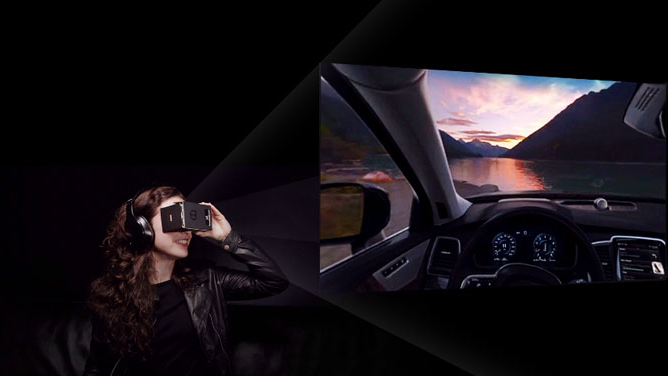Top 4 Reasons Why Luxury Car Brands are Using Virtual Reality
The advent of virtual reality in the automotive industry dates back to 2013, when Ford used an ultra-high definition VR lab to enable engineers and designers based in different locations around the world to work together on vehicles in real time.
The next remarkable use of Virtual Reality was made by VOLVO in 2014. On the launch of XC90 SUV, the company invited people to test drive the new model using virtual reality. Needless to say, the campaign achieved great response from interested buyers all over the world. Thus, VOLVO set an example for every high-end motor brand to follow.
Since then, VR automotive application has stepped beyond the R&D labs and factories, and entered showrooms and homes. With VR headsets, consumers can test drive any car of their choice just by sitting at their home.
Besides car manufacturers, car rental companies, motor shows, race circuits like NBC Sports group and even tyre, fuel and oil brands are using the thrill of virtual reality these days, in order to differentiate themselves from competitors. Famous luxury brands, outside the motor industry, which are using virtual reality include Swarovski, Prada fragrance and TAG Heuer.
This huge popularity of virtual reality in the luxury motor industry is no fad. It’s a new technological trend, still evolving, which can render the luxury retail industry a whole new dimension all together.
With Virtual Reality, the possibilities are endless. Here are the top 4 reasons why more and more car companies are adopting Virtual Reality for higher customer retention and conversions.
1. Small showroom is not a problem any more
Buyers want to see all the options they have before buying a product. And, it is no different when it comes to buying a car. Consumers not only want to see the model they want to buy but also want to drive it before spending on it. So, in case of the unavailability of a particular model that the customer is looking for, instead of just showing the catalog, the sellers can now hand them a VR headset to test drive the car then and there. This definitely increases the chances of conversion. American Car dealer Vroom has come into limelight after using VR in their showroom.
2. Deeper customer loyalty can be ensured
The longevity of a brand lies in the powerful marketing techniques, successful conversions and longer customer retention. Earning customer loyalty is trickier than we think. In order to keep your customers loyal, you need to earn their trust, so that they willingly come back to you at the time of their next purchase. The quality and services are not enough, you need to build a good relationship with the customers. That is becoming easier by using Virtual Reality. One example is powerful storytelling through VR. Taking people on virtual tours to your factories and letting them see up close how their cars was created gives them a sense of closer acquaintance. Thus, sharing your brand story with buyers through VR ensures deeper customer loyalty and trust for your brand. Audi tried to do something similar by allowing its customers to drive the car anywhere from Paris to the moon. In the words of Marcus Kühne, strategy lead at Audi "It’s not just about showing our cars in a very realistic way. It’s about the experience. Our goal is to have them leave and say, ‘Wow, that was a great two hours!’ and with VR tech that’s possible".
3. Marketing and sales become easier
It’s no more impossible to think of a complete VR Car Showroom filled with virtual cars. Cadillac is all set to open virtual showrooms to more than 400 of its smaller US dealerships. Brands like Porsche, Lexus, KIA, Volkswagen have already incorporated VR and AR experiences in their marketing strategies. Not only that the customers can explore any car they want to right away, but they can now take a test drive at their home as well. Just sending a salesman equipped with a VR headset will allow the customers to take the test drive sitting at their home. Thus, it becomes easier for buyers to quickly configure and envision multiple car models with different colors and interiors.
4. Reaching out to a wider customer base
By using virtual reality, it is easier now to reach a wider customer base quickly and effectively. The demands of the consumers are always changing. The millennials are the most elusive generation and building a customer base from them can be a real challenge. When it comes to shopping, millennials are more digitally-driven and always open to new experiences. Hence, to target this generation, car companies are adopting a more digitally-driven outlook for marketing. And VR has given them the opportunity to easily reach out to the millennials and build a stronger customer base.
These were four of the most important benefits of using Virtual reality. Hence, more and more car brands are replying on VR systems when it comes to introducing new models and highlighting specs. This new technological trend also brings in the wow factor and adds credentials to luxury vehicle companies.
If you also want your brand to have this wow factor and cred, feel free to write to us



